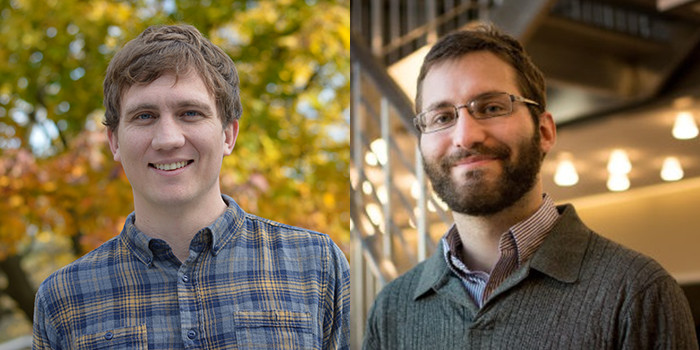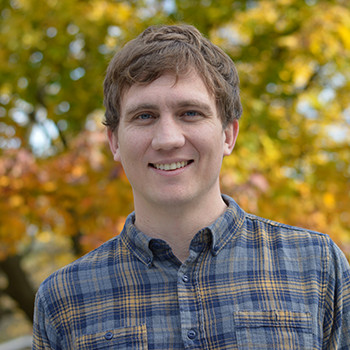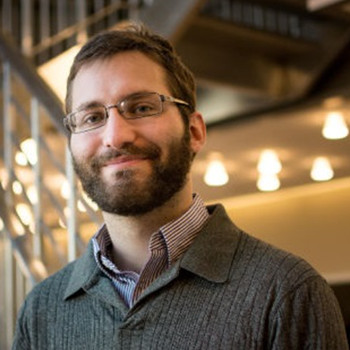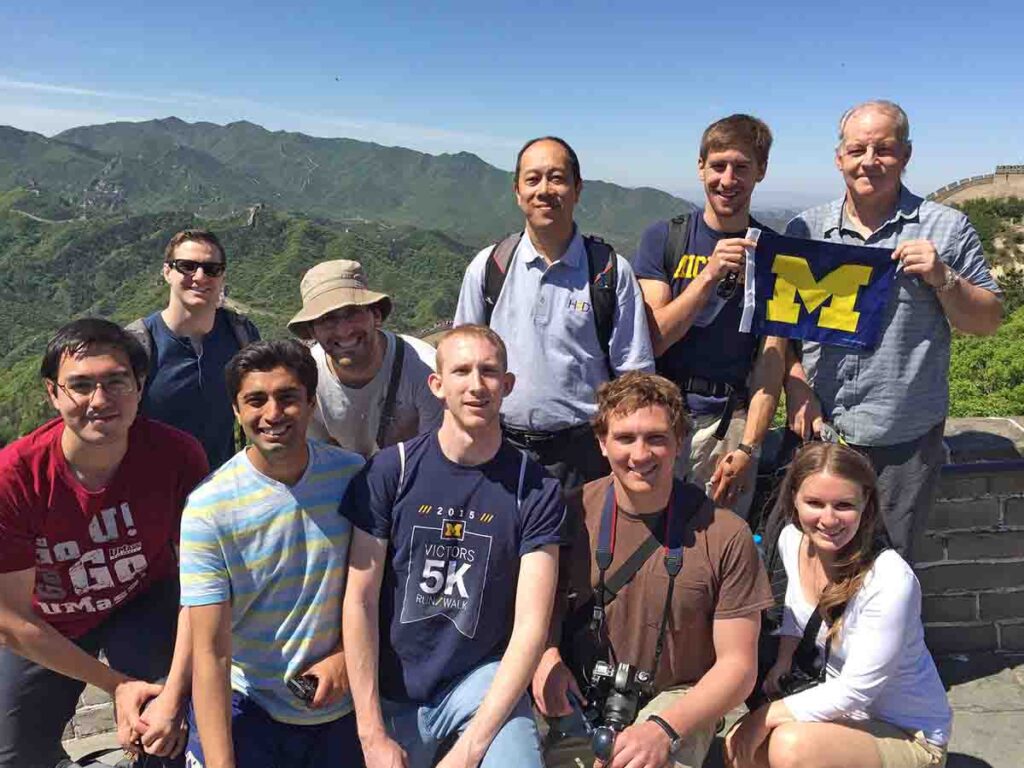
NERS alumni Steven Brown and David Goodman developing quantitative gamma imager
The imager will resolve the location and shape of nuclear materials for more accurate mass quantification.

The imager will resolve the location and shape of nuclear materials for more accurate mass quantification.


Nuclear safeguards are the processes used to account for nuclear materials, often accomplished non-destructively using gamma-ray spectroscopy. This can be a challenge at fuel processing facilities because residual nuclear material, or “holdup,” can become trapped in pipes, ducts, and other hard-to-reach equipment.
The material becoming trapped can include special nuclear material, or SNM, like uranium and plutonium which are closely tracked to prevent diversion. Within a plant, there can be hundreds of monitoring points that are scanned with handheld instruments. The main source of error with these measurements comes from uncertainty in the location and distribution of the holdup itself. This is where the new technology being developed by Steven Brown and David Goodman comes in.
Brown and Goodman are developing a high-resolution gamma-ray camera that will not only form an image but provide a gamma-ray spectrum for each pixel in the image. This allows for pixel-wise activity estimates, decoupled from the geometry of the holdup. In other words, quantitative images.
The camera will have a gamma sensor that uses pixelated Cadmium zinc telluride (CZT), allowing it to operate with good energy resolution across a wide range of temperatures. It will also make the camera smaller and more reliable for users than High-purity germanium (HPGe) detectors, which is the current commercial technology.
Brown and Goodman both graduated from U-M with PhDs in Nuclear Engineering, both were in NERS Prof. Zhong He’s group, Orion Radiation Measurement Group, and both now work at his Ann Arbor-based company, H3D.

Brown grew up in central Florida in a town called Oviedo. He’s been playing water polo since middle school and played for the University of Florida (UF) where he did his undergraduate studies in Nuclear Engineering. His undergrad advisor at UF, Prof. James Baciak, also studied under Prof. He. Brown then came to U-M to study radiation detection and received MSEs in both Nuclear Engineering and Electrical Engineering: Systems in 2015, and then his PhD in Nuclear Engineering in 2017.
At U-M, Brown was Communications Chair for the Institute for Nuclear Materials Management (INMM) Student Chapter from 2011–2014. He was responsible for all aspects of communications for the Chapter, including maintaining communications with the INMM Executive Committee and preparing reports for the Executive Committee three times annually. He also played water polo on the U-M club team.
At H3D, Brown is a researcher focused on radiation imaging. “My job is to advance the imaging capability of our instruments to address both commercial and government user needs,” he said. “Anyone at H3D will tell you it’s a great place to work. I collaborate with wonderful people to solve cutting-edge engineering problems every day. It is rewarding to see our work turn into products that make a difference to users all over the world.”
Goodman grew up outside of Ann Arbor dreaming of becoming a Wolverine. His dream came true in 2010 when he was accepted to U-M. Originally at the College of Literature, Science, and the Arts (LSA), he transferred to the College of Engineering and received his BSE in 2014, MSE in 2015, and PhD in 2019, all in Nuclear Engineering.
Goodman was the President of Alpha Nu Sigma and twice the Instructional Assistant for NERS 211 under David Wehe. He played sousaphone in the Michigan Marching Band and was an active member of the Michigan Bird Club.
“I miss the tight community of NERS,” said Goodman. “I miss working on a 315 lab report in Cooley’s CAEN with some of my closest friends while eating 50 cent ANS honey buns. Those are some of the smartest, hardest-working people I’ve ever met.” Goodman also misses regularly posting what he describes as “the worst scores of the Glenn F. Knoll Golf Open.”
Goodman’s research at H3D focuses on isotope identification, safeguards, and real-time primary coolant quantification in nuclear power plants. “H3D is an amazing place to work,” he said. “It is full of motivated, competent researchers, engineers, and technicians. People truly care about and respect each other. H3D provides the technical excitement of a national lab with the rapid turnaround of industry.”
“Working at H3D is a continuation of the deep NERS community where everyone knows each other from their time at U-M,” said Goodman. “I collaborate regularly with Dr. Brian Kitchen (NERS PhD 2015) who was my GSI for NERS 315!”
Development of the quantitative gamma imager does face a technical hurdle: they’ll need to design a gamma-ray collimator that pairs with the CZT to form images that are accurate enough for quantification. To do this, Brown and Goodman plan to use time encoding.
“Time encoding uses a scanning coded mask to efficiently and accurately record the radiation distribution over time, minimizing noise and other image artifacts,” said Brown. “Previous time-encoding prototypes developed by H3D have resulted in a ten-fold reduction in image artifacts. We believe this technique is well suited for quantitative imaging of holdup, which requires very clean images.”
The project was funded by the U.S. Department of Energy Small Business Innovation Research (SBIR) Program (Phase 1). Through SBIR funding, Brown and Goodman are also researching other issues like hot cell capable CZT spectrometers, monitoring reactor coolant water, and legacy mercury waste cleanup.